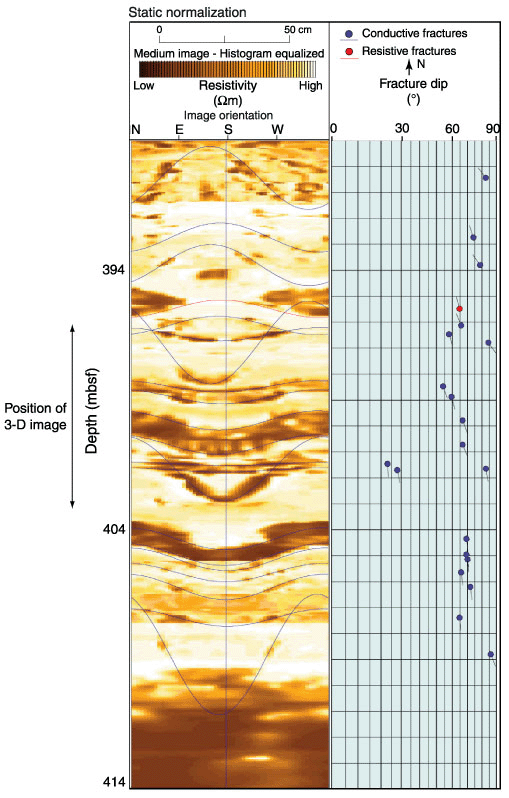ODP Leg 196: Deformation and Fluid Flow Processes in the Nankai Trough Accretionary Prism
Figure 13.
Resistivity-at-the-bit image of the frontal thrust zone at ~389-414 mbsf. The fault zone is characterized by a general increase in resistivity relative to the sections above and below with conductive (open?) high-angle fractures. Bedding is unclear within this image but the possibility remains that features interpreted as fractures could be steeply dipping high-conductivity bedding planes. The orientation of fractures appears to change from the upper to lower part of the fracture zone, from a northeast-southwest to an east-northeast-west-southwest strike. The average fracture strike of east-northeast-west-southwest (dip directions north-northwest and south-southeast) is slightly more easterly than the orientation of minimum horizontal stress determined from borehole breakouts in this part of Hole 808I.
